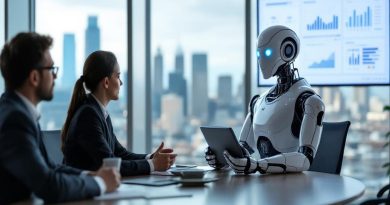The Great AI Heist: Are AI Models Built on Stolen Data?
The artificial intelligence that powers our world feels like magic. With a simple prompt, it can write poetry, generate stunning images, or debug complex code. But this magic is built on a foundation that is becoming the subject of one of the most high-stakes legal and ethical battles of our time: the data used to train these models. And the central question is a deeply uncomfortable one: Is the AI revolution fueled by the largest intellectual property heist in history?
At its core, a large language or image model is a reflection of the data it has consumed. To “teach” an AI like ChatGPT to converse or Midjourney to create art, tech companies fed them a staggering amount of information, scraped directly from the open internet. This included everything from Wikipedia and public forums to news articles, digital books, personal blogs, and vast collections of photography and artwork.
For years, this was seen as a gray area, often defended under the legal doctrine of “fair use.” Tech companies argue that they aren’t reselling the original works; they are using them to learn statistical patterns, which they claim is a transformative act. In their view, the AI isn’t “copying” a photograph; it’s learning the concept of a “photograph” itself.
Creators, publishers, and artists, however, are crying foul. They argue that this isn’t fair use; it’s industrial-scale copyright infringement. From The New York Times suing OpenAI for allegedly using millions of its articles to train ChatGPT, to Getty Images suing Stability AI for using its watermarked photos, the lawsuits are piling up. Artists wake up to find AI-generated images that mimic their unique, hard-won style with uncanny accuracy. Authors have discovered their entire bibliographies were ingested without their consent or compensation.
Their argument is compelling. If a model can generate text in the distinct voice of a specific journalist or create an image in the style of a particular artist, it has clearly done more than just learn abstract patterns. It has learned from, and can now directly compete with, the very creators whose work it was trained on. This creates a scenario where the original creators are effectively forced to compete against a machine that has ingested their life’s work for free.
This conflict exposes a fundamental disconnect between how the internet was built and how AI now uses it. The “open web” was built on the premise of sharing and accessibility for humans. AI data scraping treats it as a free, all-you-can-eat buffet for machines, with little regard for the intellectual property rights of those who laid the table.
The outcome of these legal battles will shape the future of both AI and creativity. If the courts side with the tech companies, it could solidify the current “anything goes” approach to data scraping. If they side with the creators, it could force AI labs to license their training data, potentially costing them billions and fundamentally altering the economics of building AI models.
While the legal system plays catch-up, we are left with a powerful technology built on a foundation of questionable ethics. The AI we use every day is undeniably brilliant, but we can’t ignore the possibility that it achieved that brilliance by standing on the shoulders of creators who never gave it permission to climb.




